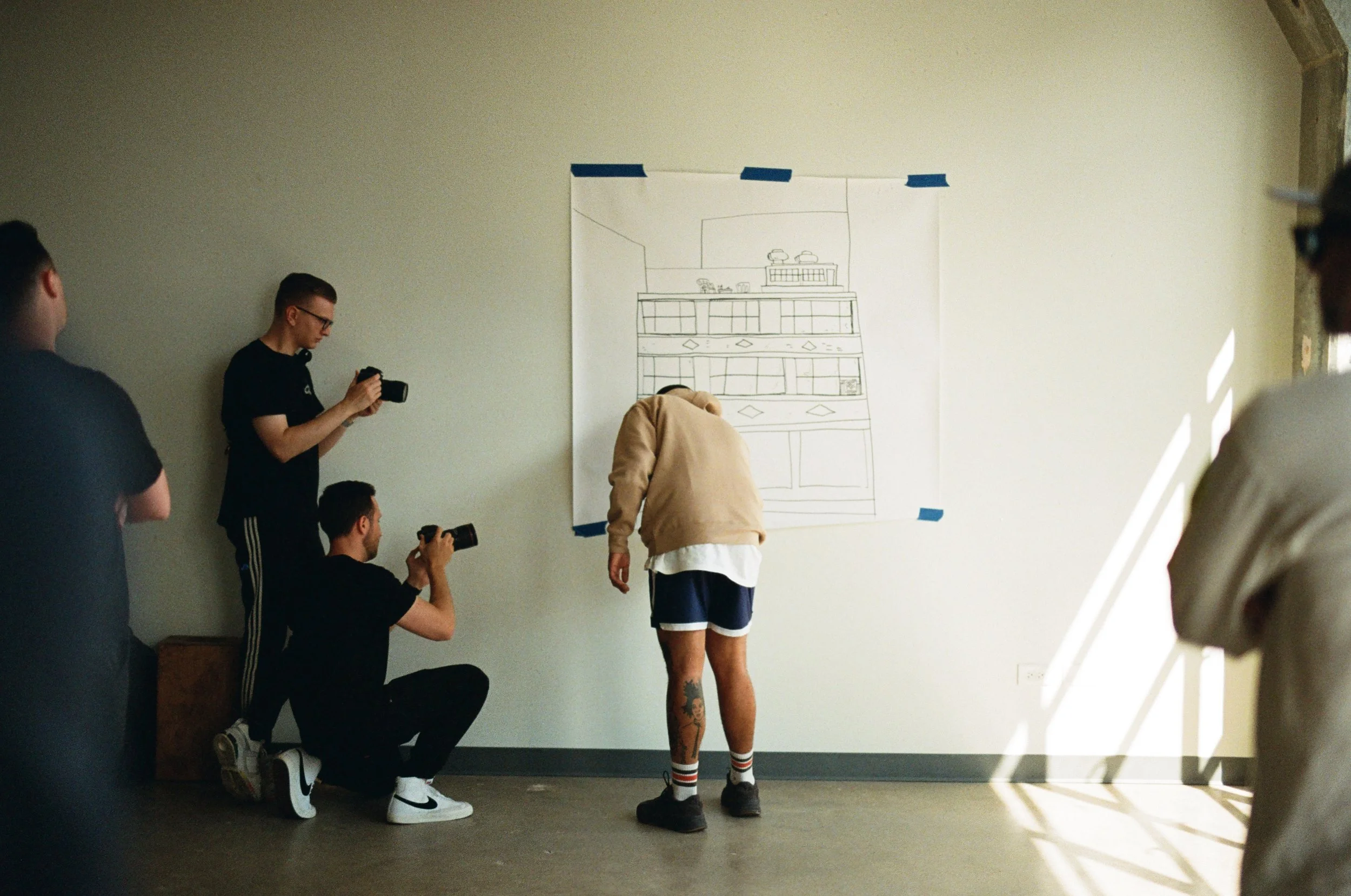Working-Class Portraiture: A Conversation With Langston Allston
Photography by DAM DAM
The moment Kevin Coval walked into Langston Allston's first art show in Chicago, the poet was astounded. Allston's paintings exhibited a knack for observing and capturing everyday 'people's stories with warmth and empathy. The nuance and graphic illustration style resonated with Coval, the work he was writing, and how he envisioned its presentation. A believer in synchronicity and always shooting your shot, that same day during the installation, Coval approached Allston about collaborating on a project. That collaboration would become their forthcoming book: Everything Must Go.
A current New Orleans resident, Allston has close ties to Chicago. He was raised in Champaign, Illinois and would often travel up north to take in the work local artists were creating within gallery spaces and in the streets. And while he headed to the Big Easy, a lot of his friends moved to Chicago. It was through one of those friends that he was able to set-up shop and manifested that first show back in the summer of 2017. Since then, 'he's continued to visit the city, work with his friends, and make some new ones like Kevin.
Everything Must Go is inspired by Wicker Park in the ''90s, the vibrant population that resided back then and their brewing displacement due to gentrification. Allston 'wasn't around to experience that change first hand, Wicker is now a shell of its former self. However, 'Coval's retelling and his own experience of seeing neighborhoods in both Chicago and New Orleans slyly become gentrified informed his work.
We sat down with the illustrator at South Facing Windows as we shot our mini-documentary on the book (which you should watch if you 'haven't done so already) and got to learn more about his upbringing, how he approached the project and his favorite poems from it. Read after the jump.
How did you first meet Kevin?
Kevin came to the first show I did in Chicago, which I guess was two years ago now. It was this installation that I made in Humboldt Park that was about me seeing that neighborhood for the first time. I got a weird opportunity to do a show in an unconventional space, so I came and made this show in two weeks. Kevin came in, saw the installation and thought that that kind of observational drawing, learning about things as you see them and talking about them in real-time, was a good fit for some of the projects he was working on. He started talking about illustrating poems and maybe illustrating a book. We went back and forth for the last two years on whether or not we were going to do it and how it was going to look and how it could work. In the meantime, we worked on a lot of different things together.
From Everything Must Go (Poetry Foundation)
Even since back then, there was already that idea to work together?
Yeah, that was really the first thing that he mentioned. I think I drew some little sketches that could be in a book illustrated and brought them to him, and he was like "oh yeah, this could work."
What type of resources did you use to illustrate that story of Wicker Park in the '90s?
The resources were mostly what Kevin gave me. We walked around the neighborhood a lot together and talked about it. He told me how he remembered it to be. For the visuals, I actually took a left turn from that and drew scenes of gentrification and change that I was more familiar with. New Orleans is a city that's rapidly gentrifying, and other neighborhoods in Chicago are going through similar transformations. So even though Kevin is talking about what is essentially historical at this point —it's not something you can't observe it in real-time. The illustrations have more to do with things I've personally seen than memories that Kevin transcribed. They're based on his poems and stories and me drawing connections to my life and things I've seen.
I know you reside in New Orleans, but do you come to Chicago often?
I'm from Champaign. I came here a lot when I was younger just to have somewhere to go and be around art. I started developing a relationship with the city early on. But then I left school in Champaign, I went to U of I for a little while, and went on some weird cross-country adventures. I ended up in New Orleans by accident and started being an artist there about four years ago. I still have friends in Chicago because I'm from Illinois. I would come up to see them and eventually that turned into me being active in the scene a little bit. I do come here a lot. A lot of my loved ones stay here, so it's a good place for me to come. The art scene in Chicago is really active; there's a lot happening. People making really cool things, visually, in music and poetry. It's world-class.
Are there any poems in this collection that truly hit you?
I've been going through that text for close to a year now, trying to figure out how to illustrate it. I have read the shit out of his poems to the point that when Kevin reads them out loud at an event, they sound completely different to me than how I was reading them because I read them so many times before I heard them. It's funny because they hit so much different when he performs them versus how they look on the page.
I think my favorite one is either the last one "Everything Must Go," or "The Jobs." [The latter] is about all the different professions people hold over time and just the progression by distinct jobs. I think it's an interesting window into the economic and social class change in the neighborhood but done in a very succinct way.
That's very powerful.
Yeah. You can also visually observe that change in the neighborhood. You see different kinds of people moving in, and you see the character of the neighborhood change almost because of the way people need to use it is different. If you have people who mostly work with their hands still living in a place, then the streets reflect that. People who are outside working, or they have their house built out to do work; they might have tools outside. The sidewalk is more alive when people do that. As things start to change and get tidied up and cleaned up, it gets more "sanitized," but the evidence of people making and building things is gone...
And the people that made those communities are displaced and disappear from the neighborhood once its gentrified. The cool thing about Everything Must Go is that it keeps their legacy alive through words and illustrations.
Yeah, it's portraiture of these moments that are particular human or speak to people that don't normally get their portrait painted. Kevin called it working-class portraiture. I think that's a good summation of what it is. It's an art that's been around for a long time, but it's exciting to be doing it. We spend so much time valorizing certain people, and that doesn't have to be bad, but it means we forget about the smalls things people have to do to get by. Or what smalls things are actual valiant actions, even just showing for your neighbors on a basic level.













